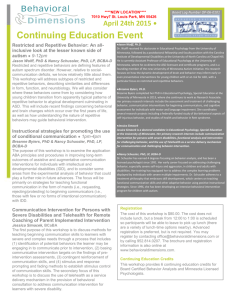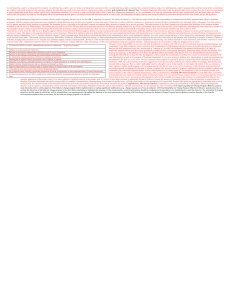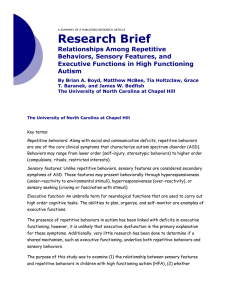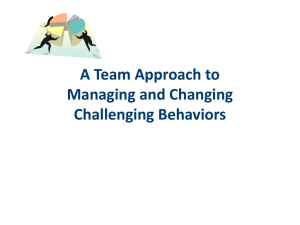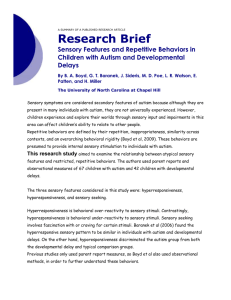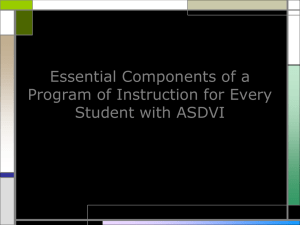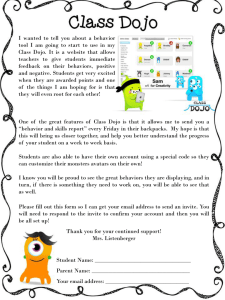Cosgrove
advertisement
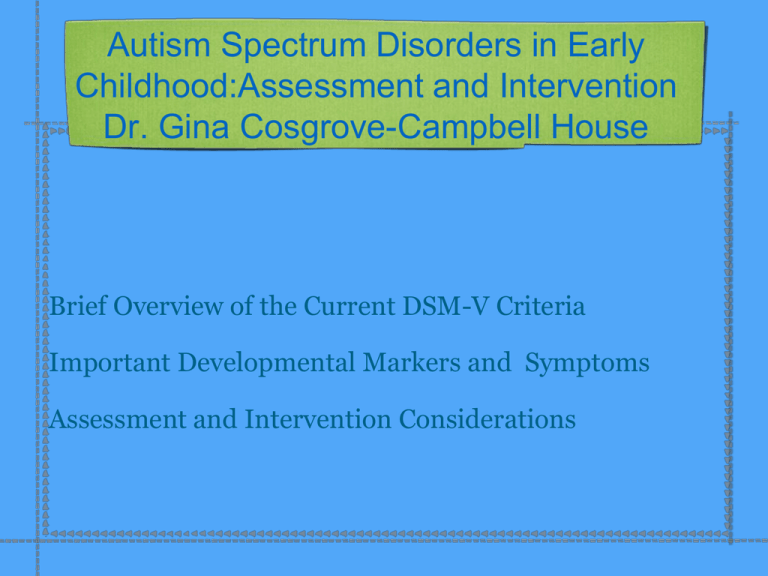
Autism Spectrum Disorders in Early Childhood:Assessment and Intervention Dr. Gina Cosgrove-Campbell House Brief Overview of the Current DSM-V Criteria Important Developmental Markers and Symptoms Assessment and Intervention Considerations Overview of the DSM-V Criteria Patterns of pervasive impairment across developmental domains. Viewed as a spectrum with varying levels of impairment across the areas of communication, cognition, socialization, motor and adaptive functioning. Diagnosis based on behavioral presentation. Autism Spectrum Disorders (ASD) Even within the same diagnosis, profiles are heterogeneous. DSM-V Overview • Social-Communication Impairments • Patterns of Restricted and Repetitive Behaviors/Sensory Needs • Level of Impairment is now identified (Level 1, Level 2, Level 3). Basically a severity scale. • Previous categories have been taken out: Asperger’s Syndrome, PDD-NOS. Lacked specificity. Etiology/Prevalence More prevalent among males (4:1) Organically-based disorder (disruption in the early pruning process - “over-connected”). Genetic Risk Etiology Unknown, though theories are proposed including impact of toxins in the environment, vaccines, diet, metal exposure, fertility treatments - none have been supported by the research. What are the early signs? No babbling by 12 months. No back and forth gesturing such as pointing, showing, reaching or waving by 12 months. Decreased responsiveness to name. No words by 16 months. No two-word meaningful phrases by 24 months. Lack of eye contact. Failure to imitate verbal/non-verbal behaviors. Any loss of speech, babbling or social skills. Current Research on Eye Gaze in Infants and Toddlers (Building Issues in Early Identification Child doesn’t have enough behaviors to see abnormalities Parents are not yet aware of how social babies are Adults automatically “fill in” for younger children Factors that make assessment difficult (tired, hungry) Don’t judge to0 quickly - but don’t miss opportunities Communication Patterns of Children with ASD Decreased initiation of meaningful language. Conversational Difficulties - lack of reciprocity. Repetitive/idiosyncratic language. Odd prosody, limited integration of gestures and eye contact. Deficits in understanding non-verbal communication (theory of mind). Social Interaction Deficits Lack of social referencing/ imitation. Decreased joint attention/shared enjoyment. Decreased range of affect. Difficulties with taking the perspective of others - egocentric. Difficulties with forming and maintaining friendships (may prefer adults to the exclusion of his/her peers). Appear immature, naïve, lacking social insight (“pathetically childish”). Yale Child Study Center - MRI imaging: Faces as Objects Restricted Interests/ Repetitive Behaviors Restricted play interests, over-reliance on sensory play. Insistence on sameness. Over-reliance on non-functional routines. Obsessive areas of interest Perseverative questioning/ restricted topics. Inflexibility within daily situations - transitional challenges. Stereotyped body movements Related Challenges Sensory Sensitivities (tactile, auditory, visual) Self-regulatory challenges (emotional dysregulation, attentional needs, mood fluctuations, sleep disturbances, selective eating patterns). Anxiety and compulsive patterns. Generalized Anxiety. Hyperactivity, Inattentiveness, Impulsivity (ADHD) Disorganization/ Motor planning weakness Medication can be helpful in treating some of these symptoms. Evidence-Based Practices Recognition that intensity and the systematic nature of the intervention are the critical components to successful outcomes. Importance of interpreting research (be a good consumer!) Applied Behavioral Analysis and Discrete Trial Teaching (errorless learning). Augmentative Communication Supports (PECS, Devices, IPads) TEACCH Methodology - Examples of Visual Support Systems Relationship-Based Approaches (RDI, FloorTime) Communicative Intent of Behavioral Patterns-Teach Replacement Behaviors It’s too loud in here I need help Let’s Play I need a break This is too hard I don’t understand

